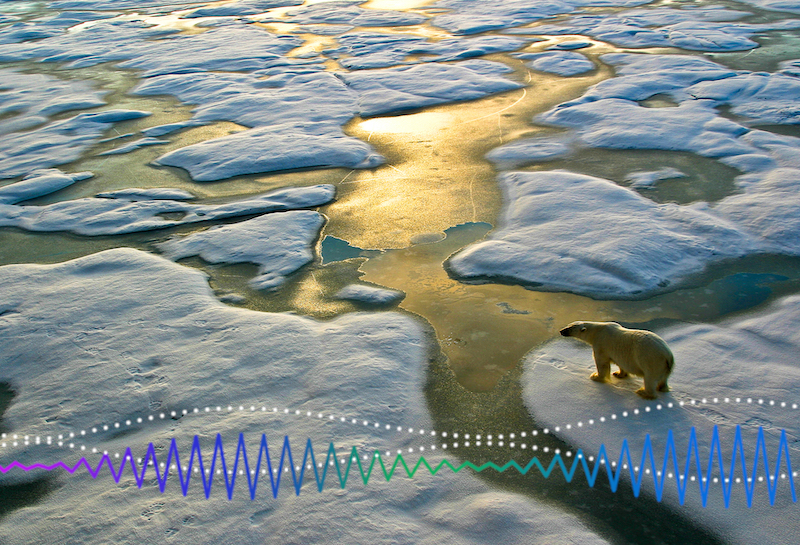Conservation experts say far more finance is needed to reverse a catastrophic decline in biodiversity, with scientists warning in 2019 that about a million animals and plant species are at risk of extinction due to human activities.
Seven of the world’s most nature-rich national parks, from Angola to Bolivia and Indonesia, are set to receive $1 million annually for the next 15 years to help protect and manage their wildlife and plant species.
These “legacy landscapes” – so-called because of their natural beauty and importance in preserving the planet’s fast-shrinking biodiversity – will benefit from a global fund aiming to attract $1 billion from governments and businesses this decade.
So far, Germany has made a contribution of nearly $100 million, with several private foundations pledging another $35 million.
France has also said it will put money next year into the Legacy Landscapes Fund (LLF), which plans to expand support to at least 30 protected areas if it reaches its $1 billion target this decade.
But conservation experts say far more finance is needed to reverse a catastrophic decline in biodiversity, with scientists warning in 2019 that about a million animals and plant species are at risk of extinction due to human activities.
Why the urgent need to protect nature?
The COVID-19 virus – believed to have originated from bats and been transmitted via wildlife trading networks in Asia – has thrust into the spotlight the links between the health of the planet’s natural systems, animals and people.
This has encouraged a rethink about how humans treat the environment, with the aim to stop damage to the climate and the natural world so the planet can continue to provide clean air, fresh water and nourishing food.
“Every day we put these benefits at risk. We are destroying nature and if we don’t turn things around quickly, we will pay the price,” British actor, musician and environmentalist Idris Elba told the launch of the fund this week.
Gerd Muller, Germany’s Federal Minister of Economic Cooperation and Development, said humankind now faces three global challenges: the loss of biodiversity, climate change and the coronavirus pandemic.
“The COVID-19 pandemic is a result of the exploitation of nature,” he said.
“If we continue to destroy ecosystems, the direct contact between animals and humans will increase and that will set the stage for the next pandemic – but we can avoid this,” he added.
One key policy, promoted by at least 50 governments, is to give formal protection to at least 30% of the Earth’s land and oceans by 2030, up from 16% of land and 8% of seas now.
The aim is to include this target in a new global pact to halt biodiversity loss, due to be agreed at a U.N. summit in October in Kunming, China.
How much money is needed for nature protection?
The amount pledged so far to the LLF is a drop in the ocean compared with the hundreds of billions environmental researchers say is needed globally each year to keep nature healthy and safe.
Protecting the planet’s plants, animals and ecosystems, and repairing the damage done to them by humans, will require about $700 billion a year in extra funding from governments and business over the next decade, a U.N. financing forum heard last year.
Zac Goldsmith, Britain’s minister of state for Pacific and the Environment, told that meeting “nature-based solutions” like better forest protection could provide about a third of the emissions reductions needed by 2030 to meet climate goals.
But such solutions have so far attracted just 3% of global climate investment, he said.
Nature campaigners have warned that the success of this year’s biodiversity summit will depend on rich countries and investors pledging far more money to developing countries that are home to much of the planet’s endangered flora and fauna.
This year has seen some progress, with the launch of big new public-private initiatives like the LLF, the LEAF coalition to fund emissions reductions from tropical forests and the Rimba Collective, a $1-billion effort to protect Southeast Asia’s forests.
But existing protected areas already suffer from a lack of financial support and far more will be needed to expand them, officials and conservationists told the LLF launch.
What kind of funding is needed?
Stefanie Lang, the LLF’s executive director, said the fund aimed to provide long-term funding to conservation groups, local people and governments that work to run national parks in a sustainable way.
Up to now, internationally backed projects have tended to last for just a few years, making it hard for those benefiting to plan for the future, she added.
The LLF will use about half its money to strengthen conservation efforts and help local communities find ways to make money that do not harm nature, through things like ecotourism or earning payments to keep forests and wetlands intact.
The other half will be used to set up an endowment, with its investment income earmarked to fund parks indefinitely.
This model will help prevent so-called “paper parks”, Lang said, where a combined lack of funding and technical expertise means on-the-ground work falls short.
“We are hoping with a 15-year commitment we can turn the tide and make those areas real protected areas,” she said.
Is it all about the animals and trees?
In southeast Zimbabwe, Gonarezhou National Park, one of seven conservation areas lined up to receive LLF funding, is known as “the place of elephants”, with about 11,000 big tuskers.
It is now hoping to reintroduce the rare black rhino after an absence of nearly three decades from the park.
But Prudence Ndavani, a procurement assistant with the Gonarezhou Conservation Trust, which manages the park, said not only animals will benefit from the project.
About 75% of the park’s staff – herself included – come from nearby communities, she said.
The park struggles with threats from illegal logging, mining, poaching and unsustainable fishing because residents of the area lack other economic opportunities, Ndavani said.
She told the LLF launch that jobs in the park, alongside efforts to help local people find other ways to make a living, played a key role in keeping Gonarezhou’s animals and their habitat safe.
The LLF’s Lang noted that involving communities from the start was key to making conservation areas a success, especially if those areas could generate a sustainable income for local people, such as through ecotourism businesses.
She stressed that the fund would not tolerate violations of the rights of indigenous and other local people, and would not continue supporting conservation areas that failed to carry out agreed activities such as stopping poaching and deforestation.
“If we see that the impacts are not there, that there are detrimental developments happening, we will stop the funding and we will withdraw,” she added.
By Megan Rowling
This article was originally published by Reuters.






